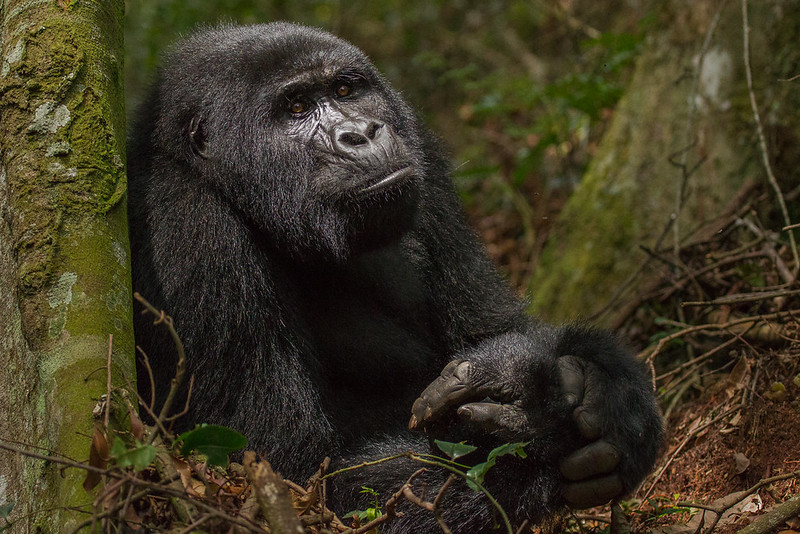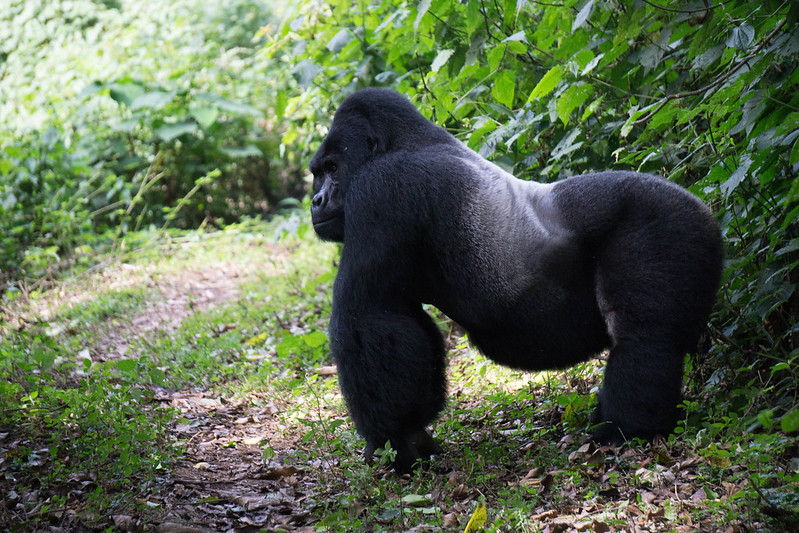
What is Bwindi Impenetrable National Park’s unique selling point?
What is Bwindi Impenetrable National Park’s unique selling point?
What is the special selling factor of Bwindi Impenetrable National Park? The many endangered mountain gorillas in Bwindi Impenetrable Forest National Park are its main attraction. Because it is home to over half of the population, or roughly 400 critically endangered mountain gorillas, Bwindi Impenetrable Forest National Park is extremely important. Because of its remarkable diversity, which includes many endemic species from the Albertine Rift, Bwindi is the most significant place for species in Uganda.
The Bindi Impenetrable Forest is thought to be a small part of a much larger forest that formerly encompassed a huge portion of the eastern Democratic Republic of the Congo (DRC), western Uganda, Rwanda, and Burundi. With more than 200 tree species, including 10 endemics and 104 fern species, the national park boasts the greatest diversity of tree species in East Africa.
With 202 species (84% of the total), including eight Albertine endemics, it is also the most significant forest in Africa for montane forest butterflies. Surprisingly, 70 of the 78 montane forest bird species that occur in the Albertine Rift region are located in the park, and 22 of the 36 are indigenous. The park is also home to more than 347 species of forest birds.
Significantly, the Bwindi Impenetrable Forest National Park is home to a number of internationally endangered species, including well-known mammals like the mountain gorilla, chimpanzee, l’Hoest’s monkey, and African elephant; birds like the Turner’s Eremomela, African giant swallowtail, Grauer’s swamp warbler, Chapin’s flycatcher, and Shelley’s crimson wing; and butterflies like the African giant swallowtail and cream-banded swallowtail.
Bwindi Impenetrable Forest National Park offers a variety of tourism activities.
Gorilla trekking is the most popular activity in the park and the main attraction of any safari in Uganda, drawing large numbers of visitors. There are more than 400 mountain gorillas in Bwindi Forest National Park, and trekking with them is always an option. The duration of gorilla trekking varies from two to five hours, depending on the location of the mountain gorilla species.
However, visitors are always advised to arrive at the park’s headquarters an hour prior to the trek. There, they will complete the registration process and receive briefings about the rules and regulations they should adhere to during the trek, including that they should not eat or drink in the presence of gorillas, avoid making direct eye contact with the species, and maintain a distance of approximately 7 meters from the animals, among other things.
Depending on which guerilla groups they are willing to walk with, they are then divided into groups of no more than eight people. A park guide is assigned to each group, whose job it is to lead and guarantee the safety of both the visitors and the animals. Following their placement in their natural habitats, visitors are always allowed to spend approximately an hour interacting with the gorillas. It is during this time that visitors can learn about the habits and personalities of the mountain gorilla species, including how they feed and consume their young.
Observing birds
For those who enjoy birds, Bwindi Impenetrable Forest National Park is a wonderland. The park’s forest is home to a wide range of vibrant bird species. The park is a great place for bird-watchers because it is home to more than 350 different species of vibrant birds. Each of the park’s four main sectors—Nkuringo, Buhoma, Rushaga, and Ruhiji—offers a variety of bird species, making them great destinations for bird watching trips.
You will get the chance to see a range of birds during your guided bird-watching safari in the park, including the Shelley’s Crimsonwing and the African green broadbill, which are also present here. Green Pigeons, Ross’s Turaco, handsome Francolin, Rwenzori Turaco, Red-Faced Woodland Warbler, Re-Throated Alethe, Paradise Flycatcher, Gigantic Forest Hornbill, purple-breasted Rockefeller’s Sunbird, Ruwenzori Batis, Stripe-Breasted Tit, Collared Apalis, blue-headed sunbird, and white-headed wood hoopoe are some of the rest of the fauna.
Observing birds and butterflies
With 200 species in the wild, including eight endemic species of butterflies from the Albertine Rift, the Bwindi impenetrable forest is an amazing home to a wide variety of stunning butterfly species drawn by the lush foliage and ideal environment. The park is one of the places in Africa where a wide variety of vibrant butterflies may be seen with ease.
Seeing butterflies is a breathtaking and unique experience that lets you fully appreciate the beauty of these delicate creatures in the lush, biodiverse forest. You will have the opportunity to see a variety of butterflies on a butterfly watching excursion in the forest, including Papilio Zalmoxis Hewitson, Nireus Felder, Papilio nireus Linnaeus, Papilio nireus pseudo, Graphuim antheus, and Papilio antimachus parva Jackson.
Hiking and nature walks
Hiking and nature treks in the thick forest of Bwindi provide an amazing chance to discover the park’s hidden treasures. Hiking and nature walks provide you the chance to learn about and gain an appreciation for the various ecosystems found in this incredible environment, as well as to fully immerse yourself in the natural beauty of the rainforest.
Hiking and nature walks in the park are rare guided trips that provide guests with important ecological information. You can encounter the rare mountain gorillas, chimpanzees, and colobus, among other primates; mammal species like forest elephants and buffalos; colorful bird species; and stunning vegetation that make the Bwindi Forest their natural habitat during nature walks and hiking tours.
The Batwa people
Through the Batwa cultural experience, visitors will be able to relive the customs and way of life of the Batwa, who inhabited the Bwindi Impenetrable Forest prior to being forced to leave and become squatters in the neighborhoods surrounding the park. You will get the chance to share and demonstrate how they hunted, cooked, used unexpected resources, such as sticks to make fire, collected wild honey, and shared their knowledge of the plants they used for medicine and food throughout the cultural experience. These intriguing indigenous communities lived side by side with the animals and plants for a very long time and were heavily dependent on the forest. The encounter will also include the sharing of exotic dances and melancholic tunes.

